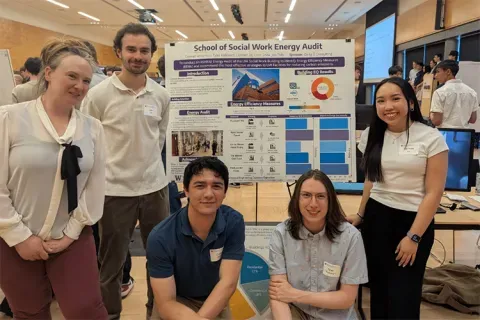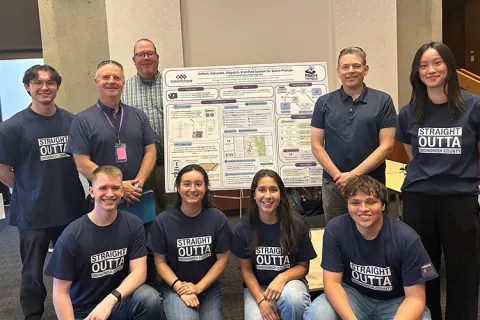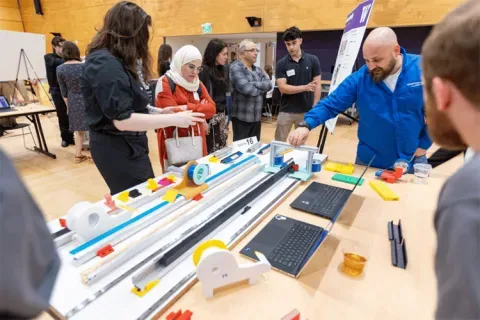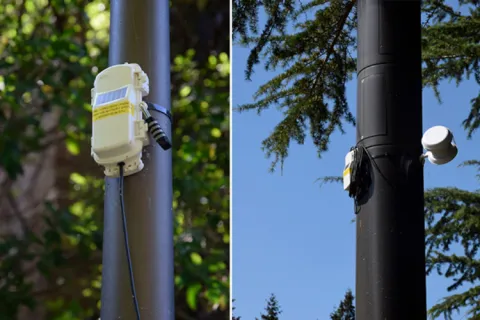UW Sensors, Energy and Automation Lab (SEAL)
Wireless Leak Localization System
This capstone project builds on the 2023/2024 Wireless Sensor System for Detection of Air Leaks industry capstone project. The team will improve the system by making it modular and enhancing its leak detection capabilities. This year’s team will improve the system by upgrading the hardware, refining the machine learning signal processing, and improving the communication setup for better adaptability and durability. The team will build or find compressed air systems on the UW campus to test their improvements. The project seeks to provide a practical, cost-effective solution to reduce energy waste and improve operational efficiency of processes that use compressed air. It is relevant to the Department of Electrical and Computer Engineering, as it involves sensor technology, signal processing, wireless communication, and embedded systems. The team will maintain the 2023/2024 system performance benchmarks, including noise level reduction to below 20 µg/√Hz, measurement accuracy within 0.5% deviation, and durability in harsh environments. Enhancements to the machine learning signal processing algorithms will incorporate advanced filtering techniques and adaptive thresholding to improve data acquisition accuracy to better differentiation between normal operational vibrations and ultrasonic leak signatures. The wireless communication setup will be optimized using low-power, long-range communication protocols (LoRa, Zigbee, or similar) instead of Wi-Fi to increase range and reliability. The system will continue to provide real-time monitoring of leak locations with added flexibility for deployment in various layouts. To ensure scalability, the system needs to be tested in a range of operational conditions to verify its adaptability and performance. The project will involve sourcing updated MEMS accelerometers with improved sensitivity, integrating them with optimized signal processing units, and conducting validation tests through both simulated and real-world leak scenarios to assess performance against targeted specifications. The system will be capable of providing real-time data on the location with improved accuracy, reliability, and adaptability from the 2023/2024 project. Key deliverables will include an improved hardware design (PCB and enclosed sensor casing), a test system with at least 5 sensors modules, refined signal processing algorithms, non-Wi-Fi communication framework, and comprehensive documentation (setup/installation guidelines and user manuals). Additional outcomes will include test results from both simulated and real-world air leak scenarios. The project will also deliver a final report summarizing the system's performance, scalability, and potential for further optimization in different industrial applications.
Faculty Adviser(s)
Alex Mamishev, Electrical & Computer Engineering
Related News

Mon, 10/13/2025 | UW Mechanical Engineering
Capstone collaboration leads to award
An ME capstone team received first place for its energy audit of the UW School of Social Work building.

Thu, 07/17/2025
UW engineering students develop smart ballot solution
UW engineering students develop smart technology solution to improve ballot collection for Snohomish County.

Mon, 07/07/2025 | UW Mechanical Engineering
Capstone creations
Students displayed innovative capstone design projects at the 2025 expo.

Fri, 09/20/2024 | UW Civil & Environmental Engineering
Smarter irrigation for a greener UW
A new project combines satellite data with ground sensors to conserve water and create a more sustainable campus environment.